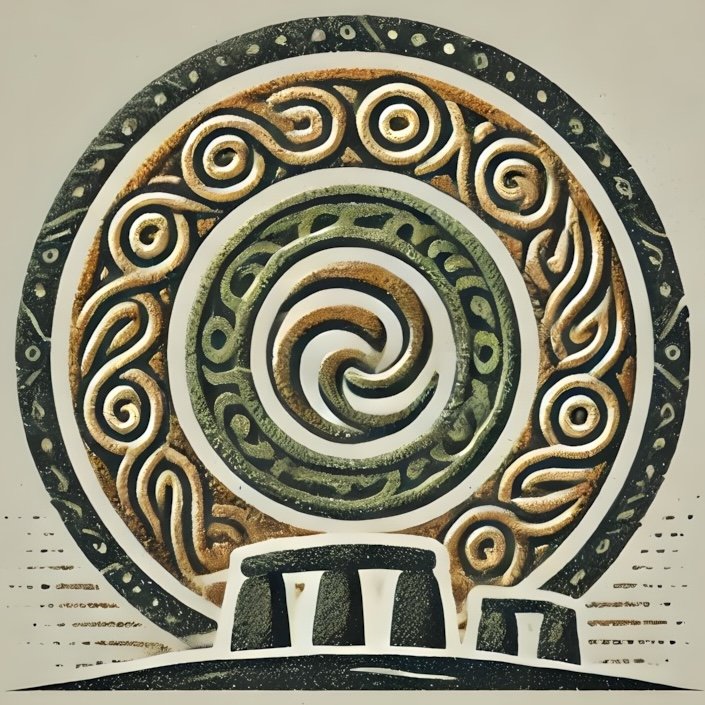Were There Romans in Ireland? The Debate Over Settlements
Introduction to Roman Influence
The question of whether Romans ever established settlements in Ireland has long intrigued historians, archaeologists, and enthusiasts of Irish prehistory. While the Roman Empire expanded across much of Europe, the Emerald Isle remained largely untouched by direct Roman control. However, the influence of Rome permeated Ireland in various ways, from trade and cultural exchange to the impact of Roman military presence in nearby Britain. This article explores the multifaceted debate surrounding Roman influence in Ireland, examining historical context, archaeological evidence, literary sources, scholarly debates, cultural exchanges, and key sites of interest.
Historical Context
To understand the potential for Roman influence in Ireland, one must first consider the broader historical context of the Roman Empire during the first few centuries CE. At its height, the Empire stretched from the Iberian Peninsula to the Middle East, encompassing diverse cultures and peoples. The Romans were known for their military prowess, engineering feats, and administrative efficiency, which allowed them to exert control over vast territories.
While the Romans successfully invaded and settled in Britain in 43 CE, Ireland remained outside their direct governance. The reasons for this exclusion are manifold: Ireland’s geography, the fierce resistance of its tribes, and the Empire’s focus on consolidating its power in Britain. Nevertheless, the proximity of Ireland to Roman Britain and the existing trade networks raised the possibility of indirect Roman influence.
Archaeological Evidence
Archaeological evidence provides a crucial lens through which to examine Roman activity in Ireland. While no substantial Roman settlements have been definitively identified, several artifacts suggest a degree of contact. Roman coins, pottery, and glassware have been discovered at various sites across Ireland, indicating trade and exchange. For instance, a hoard of Roman coins found in County Antrim highlights the possibility of economic interactions.
Furthermore, sites such as the ancient hillfort of Emain Macha in Armagh have yielded artifacts that bear Roman stylistic influences. While these findings do not confirm the establishment of Roman settlements, they do suggest that the Irish were engaging with Roman culture and trade networks, albeit indirectly.
Literary Sources
Literary sources from both Roman and Irish perspectives offer additional insights into the relationship between Rome and Ireland. Roman writers, such as Tacitus and Ptolemy, provide descriptions of the Irish landscape and its people, albeit often colored by their own biases. Tacitus, in his “Agricola,” mentions the existence of tribes in Ireland, but his accounts are limited and primarily focus on Britain.
Irish literature, particularly the annals and mythological tales, also reflects a complex relationship with the Romans. The “Annals of the Four Masters,” a chronicle of Irish history, includes references to interactions with Roman figures, albeit often in a mythologized context. These texts illustrate how the Irish viewed the Romans, oscillating between admiration and disdain.
Debates Among Scholars
The question of Roman presence in Ireland has sparked considerable debate among scholars. Some argue that the lack of substantial evidence for settlements indicates that the Romans never established a permanent foothold in Ireland. Others contend that the archaeological record, while sparse, points to a level of interaction that cannot be ignored.
One prominent theory posits that the Romans may have viewed Ireland as a potential source of resources, particularly in the form of cattle and precious metals. This perspective suggests that while the Romans may not have colonized Ireland, they were nonetheless interested in its economic potential. Conversely, other scholars argue that the absence of military forts or substantial infrastructure indicates a lack of significant Roman interest.
Cultural Exchange and Influence
Despite the absence of formal settlements, the cultural exchange between the Romans and the Irish is evident in various aspects of life. The introduction of new agricultural practices, metalworking techniques, and trade goods likely influenced Irish society. The use of Roman-style pottery and glassware in Irish contexts suggests that the Irish were adopting elements of Roman material culture.
Moreover, the spread of Christianity in Ireland during the 5th century can also be seen as a form of cultural exchange influenced by Roman practices. The arrival of missionaries from Britain, who were themselves influenced by Roman Christianity, marked a significant turning point in Irish history. This exchange of ideas and beliefs illustrates how, even without direct Roman governance, the Empire’s cultural legacy permeated Irish society.
Key Sites of Interest
For those interested in exploring the potential Roman influence in Ireland, several key sites offer insights into this complex relationship.
1. Dún Aonghasa: Located on the Aran Islands, this prehistoric fort showcases the defensive architecture of the time. While not Roman, it provides context for understanding the strategic importance of Ireland during the Roman era.
2. The Hill of Tara: This ancient ceremonial site in County Meath was a political and spiritual center for the Irish. Its significance during the time of Roman influence is a topic of ongoing research.
3. The National Museum of Ireland: Home to a vast collection of artifacts, including Roman coins and pottery, this museum provides a comprehensive overview of the material culture that reflects the interactions between Ireland and the Roman world.
4. Emain Macha: This archaeological site in Armagh features remnants of ancient fortifications and artifacts that suggest Roman stylistic influences, making it a focal point for understanding the potential interactions between the two cultures.
Irish Responses to Roman Presence
The Irish response to the potential Roman presence was multifaceted. While some tribes may have engaged in trade and cultural exchange, others resisted Roman influence. The fierce independence of the Irish tribes, coupled with their rich cultural traditions, fostered a sense of identity that was resistant to outside control.
The legendary tales of heroes and warriors in Irish mythology often reflect this spirit of resistance. Figures such as Cú Chulainn and Fionn mac Cumhaill symbolize the valor and strength of the Irish people, serving as cultural touchstones that underscore the enduring legacy of pre-Roman Ireland.
In conclusion, the question of whether there were Romans in Ireland is not merely a matter of archaeological evidence or historical accounts; it is a reflection of the complex interplay between cultures, identities, and the enduring spirit of a nation. The debate continues, fueled by new discoveries and interpretations, ensuring that the story of Ireland’s relationship with Rome remains a vibrant and evolving narrative.
meta –

